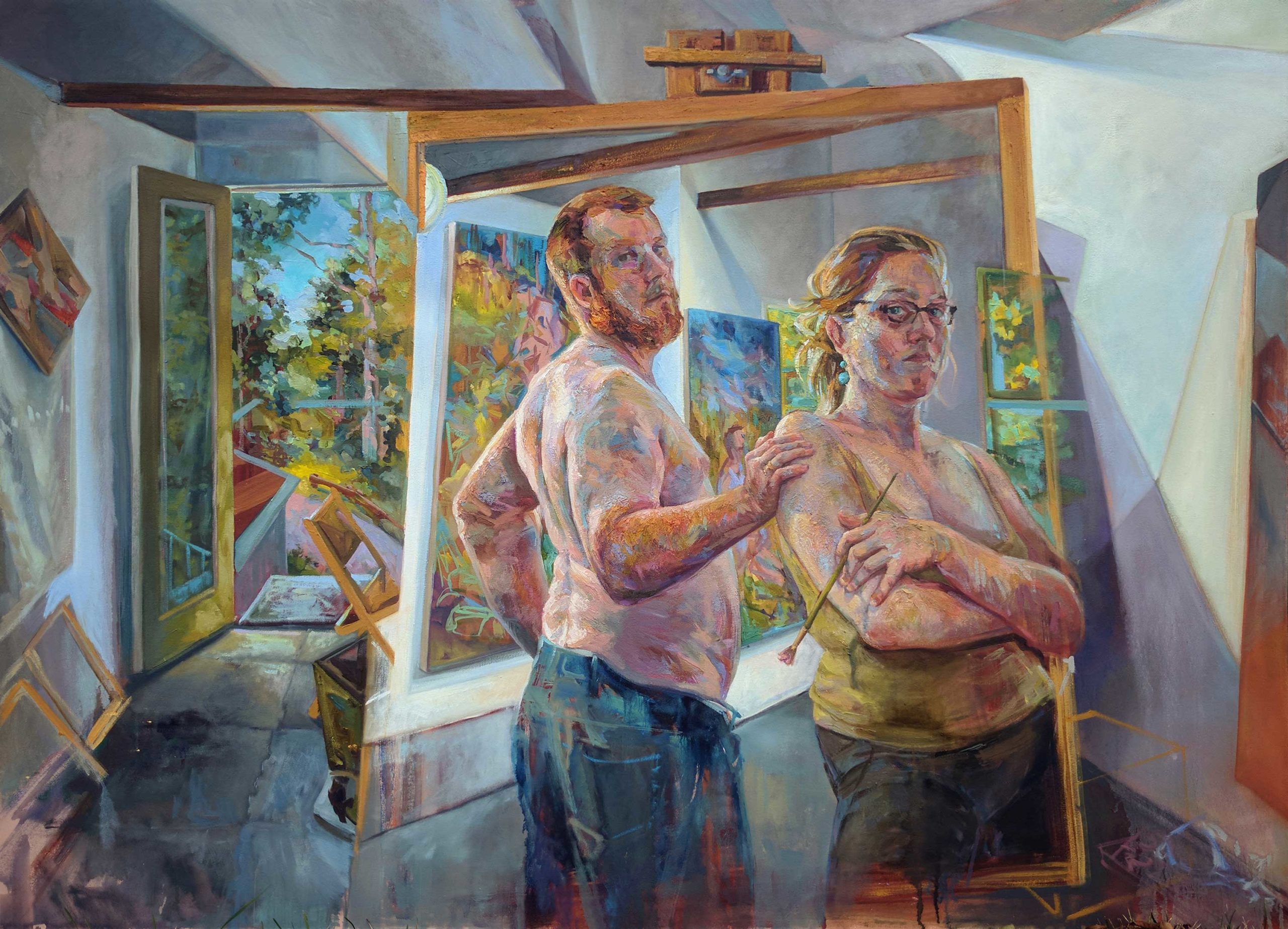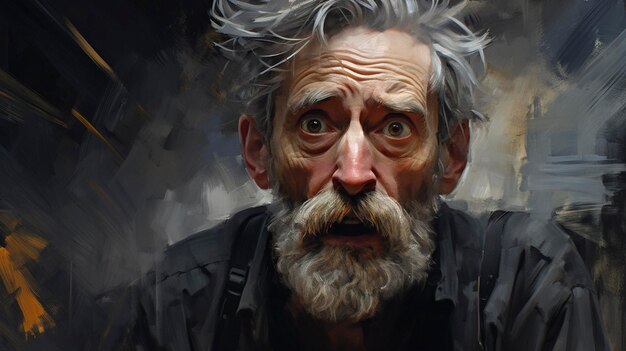Checking Out Iconic Artists and Their Influences on Figurative Oil Painting
Checking Out Iconic Artists and Their Influences on Figurative Oil Painting
Blog Article
The Development of Figurative Oil Paint: Recognizing Its Historical Importance and Modern Interpretations
The advancement of figurative oil paint offers as a compelling lens via which to analyze the interaction between creative expression and historic context. Contemporary artists, drawing from this abundant heritage, are now reinterpreting the human figure in means that test conventional stories.
Origins of Metaphorical Oil Paint
The origins of metaphorical oil paint can be traced back to the early Renaissance in Europe, specifically in the 15th century. This period marked a substantial departure from the stiff kinds and flat representations particular of middle ages art. Artists began to check out naturalism, stressing the human figure and its emotional expression. The advancement of oil paint permitted greater depth of color and information, boosting the realistic look and vibrancy of their work.

In this transformative period, numbers were usually shown within contextually abundant atmospheres, showcasing not only their physical characteristics but additionally their mental states. Pioneers such as Jan van Eyck and Titian utilized the medium's convenience, using layering methods to achieve luminance and appearance. This advancement helped with the representation of complex materials and the subtleties of complexion, contributing to the development of portrait and narrative scenes.
Additionally, the Renaissance emphasis on humanism promoted a gratitude for individualism, which subsequently influenced musicians to produce even more vibrant and relatable numbers - figurative oil painting. Because of this, metaphorical oil painting arised as a powerful lorry for narration and emotional involvement, preparing for future imaginative motions and designs
Key Historic Movements
Substantial historical activities have formed the evolution of metaphorical oil painting, each contributing one-of-a-kind viewpoints and strategies that broadened the tool's possibilities. The Renaissance noted a pivotal moment, stressing realism and the human type, with musicians like Leonardo da Vinci and Michelangelo pushing the limits of physiological accuracy and point of view. Following this, the Baroque era brought remarkable contrasts of light and darkness, exemplified by Caravaggio, who instilled spiritual themes with intense emotionality.
The 19th century presented Romanticism and Realistic look, where musicians such as Delacroix and Courbet challenged classic perfects, concentrating on individual expression and daily life. The development of Impressionism further transformed the tool by stressing the effects of light and color, resulting in a separation from typical depiction.
In the very early 20th century, movements like Expressionism and Cubism redefined figurative painting with abstraction and the exploration of psychological deepness. Each of these movements not only mirrored the social changes of their times yet additionally laid the groundwork for contemporary analyses. The interaction in between these historical activities has actually produced an abundant tapestry of philosophies and styles, affecting modern-day artists in their pursuit of catching the human experience on canvas.
Techniques and Materials Evolution

Throughout the Baroque duration, methods such as chiaroscuro and sfumato arised, improving the psychological resonance of metaphorical structures. Musicians began to trying out glazes and impasto, adjusting texture and luminance. By the 19th century, developments like the usage of pre-mixed paints in tubes transformed access, enabling musicians to paint en plein air and catch the short lived impacts of light.
The 20th century observed the introduction of artificial pigments and tools, which expanded the combination and modified the consistency of oil paints. The exploration of new application methods, such as scheme knives and brushes of differing rigidity, further diversified creative expression. Jointly, these advancements show the progressing partnership between materials, methods, and the imaginative vision inherent in figurative oil painting.

Contemporary Interpretations
Contemporary interpretations of figurative oil painting show a dynamic dialogue between tradition and development, where artists challenge established norms and explore diverse motifs. This advancement shows up in numerous means, as modern artists blend classical techniques with modern principles, usually resolving social, political, and individual stories.
Numerous specialists draw ideas from historic works, yet they infuse their items with modern point of views, utilizing the human form as a lorry for discourse on society, identity, and sex. Artists increasingly trying out abstraction, distortion, and multimedias, which permits a wider analysis of the number and its context.
In addition, the usage of vibrant color schemes and non-traditional compositions frequently serves to interrupt traditional viewing experiences, prompting essential involvement from audiences. This change in focus expands beyond visual appeals; it mirrors a growing recognition of the complexities of human experience in an interconnected globe.
As figurative oil paint continues to progress, it remains a crucial medium for checking out the subtleties of contemporary life, personifying both a respect for heritage and a dedication to dynamic thought. The outcome is an abundant tapestry of expression that resonates with the intricacies of the modern human condition.
Influence on Modern Art
The influence of metaphorical oil painting on contemporary art is extensive, as it has actually consistently inspired a myriad of creative motions and techniques throughout the 21st and 20th centuries. From Expressionism to Surrealism and past, the exploration of the human figure has stayed a central style, permitting musicians to share complex emotions and narratives. This emphasis on figurative representation has resulted in a re-examination of standard methods, leading to cutting-edge strategies that mix realistic look with abstraction.
In addition, modern musicians have actually welcomed metaphorical oil paint as a method to attend to political and social concerns, using the tool to challenge understandings of culture, sex, and identification. The renewal of rate of interest in figurative operate in current years mirrors a hoping for link in a progressively digital globe, where human experience and feeling are vital.
Furthermore, the dialogue in between metaphorical oil browse around these guys painting and modern art appears in the jobs of artists such as Kehinde Wiley and Jenny Saville, who make use of historic references while instilling their items with contemporary relevance. Inevitably, figurative oil painting remains to shape and redefine modern imaginative expression, highlighting its enduring value in the art world.
Final Thought
The development of metaphorical oil paint highlights its historic significance and versatility throughout numerous artistic motions. Eventually, metaphorical oil paint remains a crucial tool for exploring the human experience, resonating exceptionally in today's electronic landscape.
The evolution of figurative oil painting offers as an engaging lens via which to examine the interplay in between imaginative expression and historic context.Significant historical motions have formed the advancement of metaphorical oil paint, each contributing unique viewpoints and methods that increased the tool's opportunities.As historic activities formed the trajectory of figurative oil painting, the techniques and materials employed by artists have also undergone significant changes. figurative oil painting.The effect of figurative oil painting on modern art is profound, as it has continuously motivated a myriad of imaginative movements and methods throughout the 20th and 21st centuries.The advancement of metaphorical oil painting underscores its historic value Check Out Your URL and flexibility throughout different creative motions
Report this page